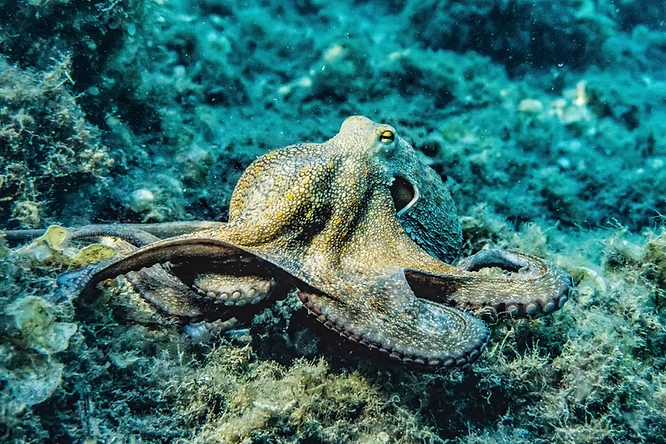Deadly Maternal Behavior in Octopuses
After mating, many female octopuses enter a behavioral spiral where they obsessively brood their eggs, stop eating, and die of starvation before their offspring hatch. A recent study of California two-spot octopuses (Octopus bimaculoides) links this extreme maternal behavior to changes in cholesterol metabolism that increase steroid production.
The Role of Optic Glands
More than 40 years ago, researchers identified two optic glands located between the eyes as key regulators of this behavior. Unlike their name suggests, these glands are not related to vision but function similarly to pituitary glands in vertebrates. Surgical removal of the glands causes females to abandon their eggs, resume eating, and survive for months longer than intact females.
Biochemical Mechanisms
Using mass spectrometry, researchers monitored chemical outputs from the optic glands and identified three steroid-related pathways activated after mating:
- Pregnenolone and Progesterone Pathway: Linked to pregnancy in other animals, these steroids increase following mating.
- Maternal Cholestanoids Pathway: Produces intermediate compounds that contribute to bile acid synthesis.
- 7-Dehydrocholesterol (7-DHC) Pathway: Generates high levels of 7-DHC, a cholesterol precursor associated with toxicity.
Parallels with Human Disorders
In humans, mutations preventing conversion of 7-DHC to cholesterol cause Smith-Lemli-Opitz syndrome, leading to elevated 7-DHC levels and developmental defects, sometimes including self-harming behaviors. Similarly, high 7-DHC in octopuses is associated with lethality, suggesting that disruption of cholesterol metabolism has severe biological consequences across species.
Implications and Expert Perspectives
Roger Hanlon of the Marine Biological Laboratory calls the study “elegant and original,” noting it addresses longstanding questions about octopus reproduction and programmed death. Coauthor Z. Yan Wang emphasizes that the toxicity of 7-DHC demonstrates a lethal parallel between humans and octopuses, highlighting the critical role of cholesterol-related pathways in survival and behavior.
Conclusion
This research provides a mechanistic explanation for the fatal maternal behavior in octopuses, connecting optic gland activity, steroid production, and cholesterol disruption. Understanding these pathways sheds light on fundamental evolutionary and physiological processes and offers a rare window into the biochemical underpinnings of programmed death in animals.

